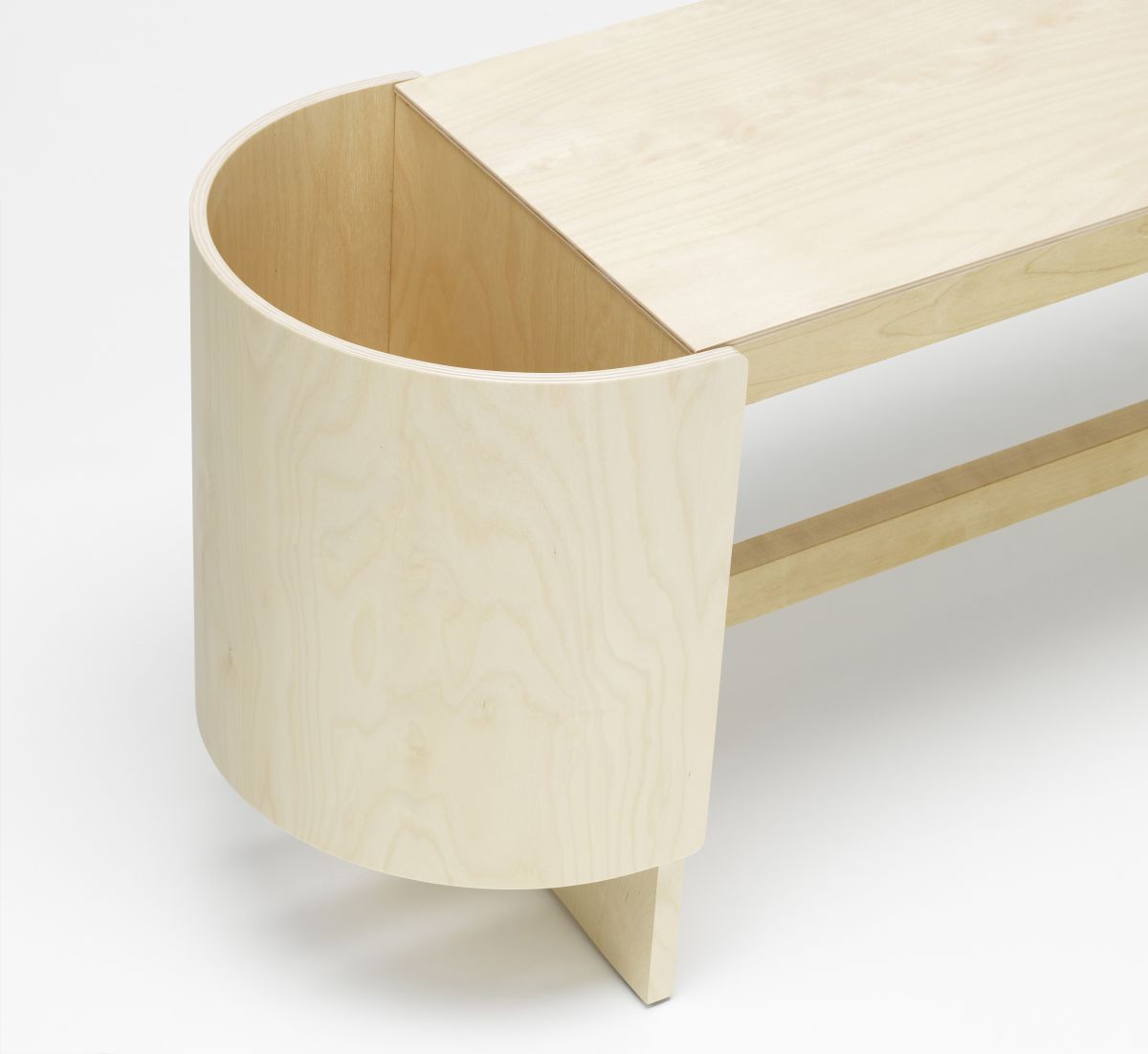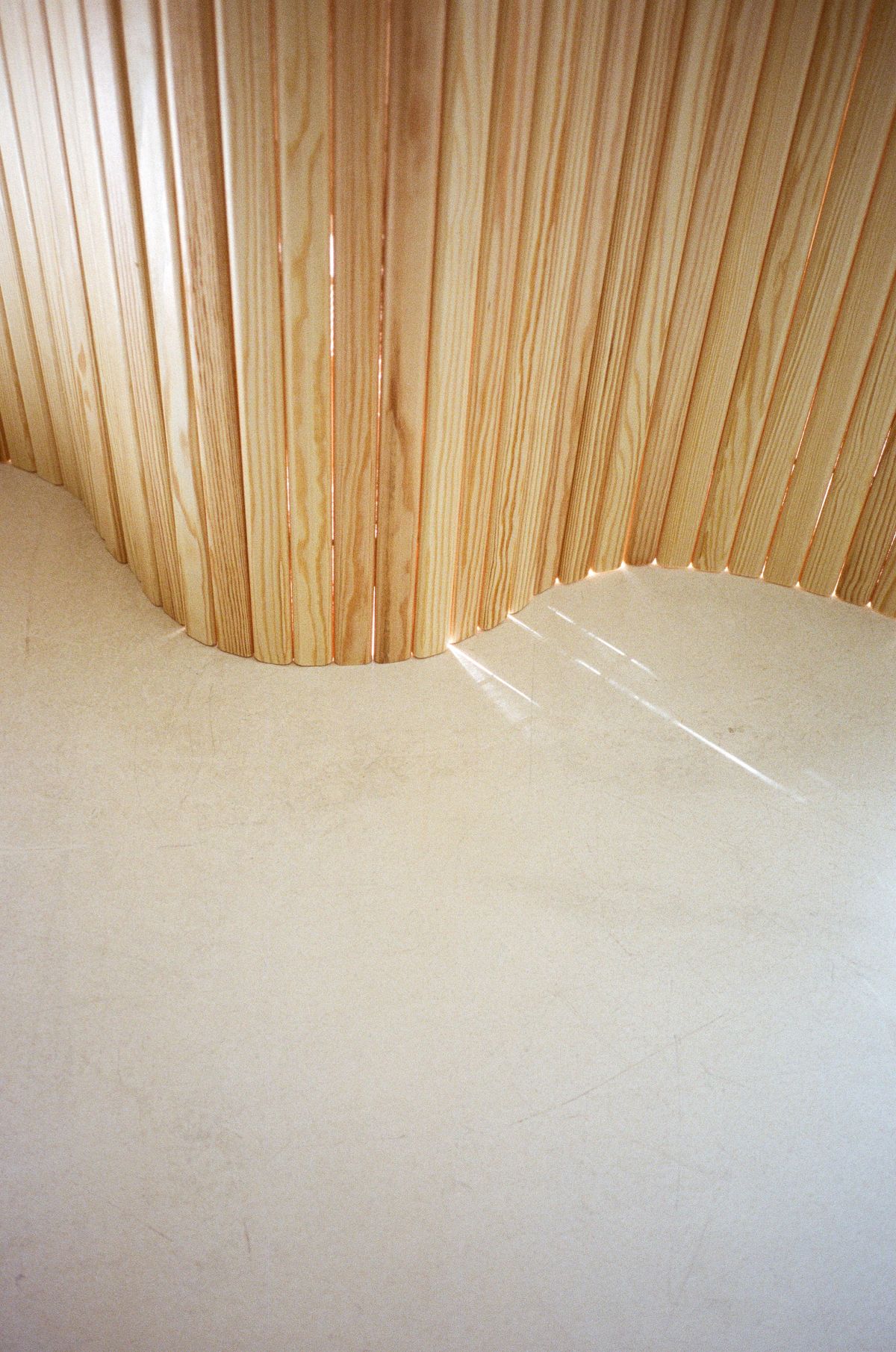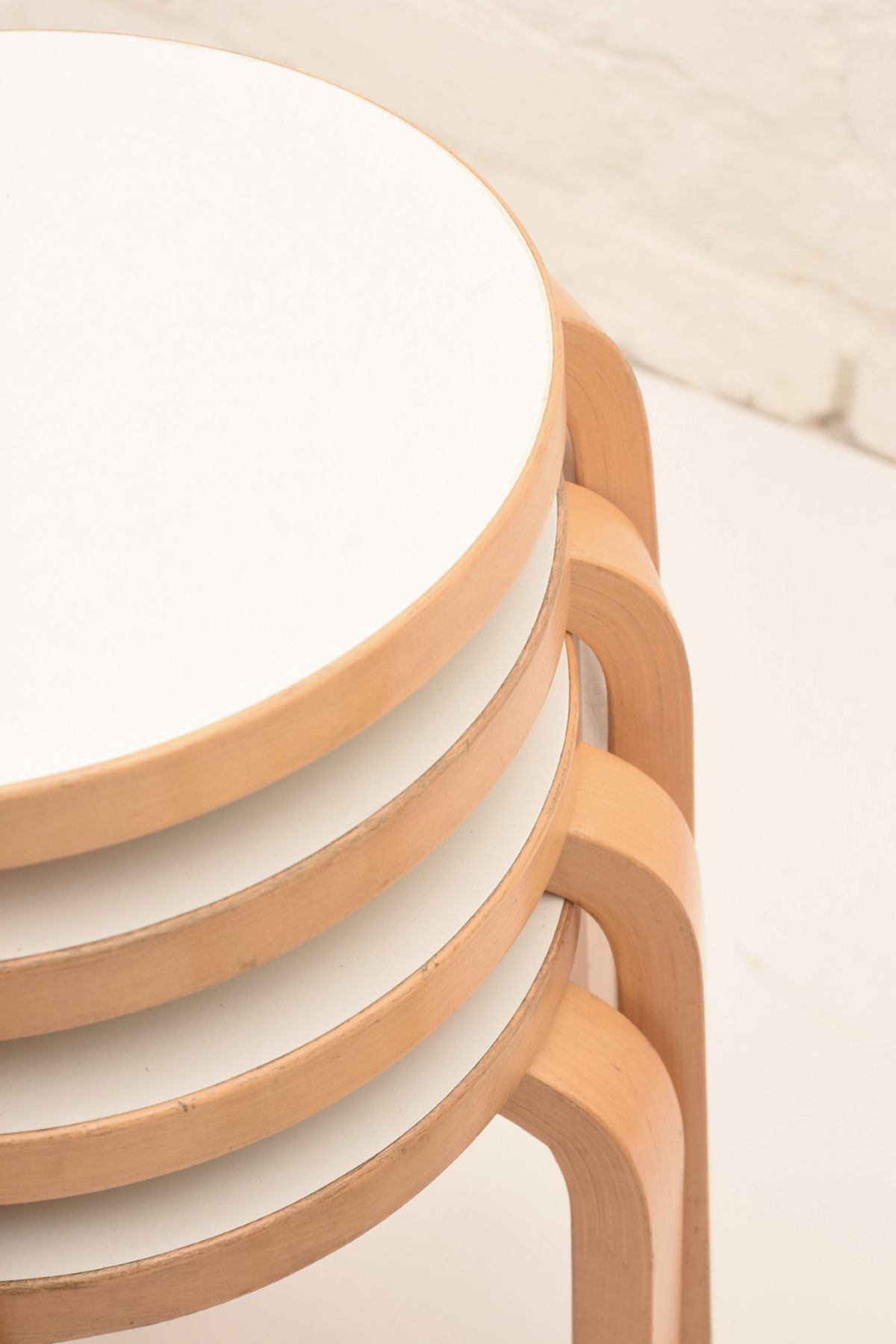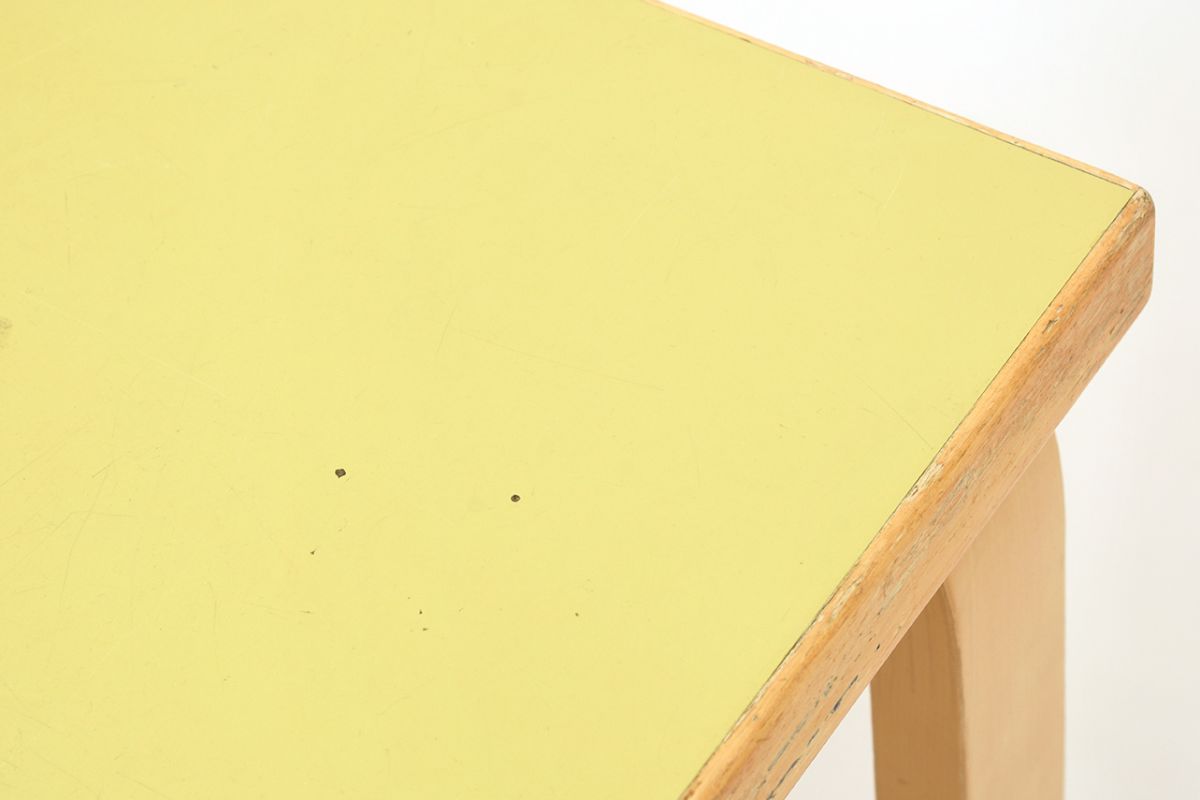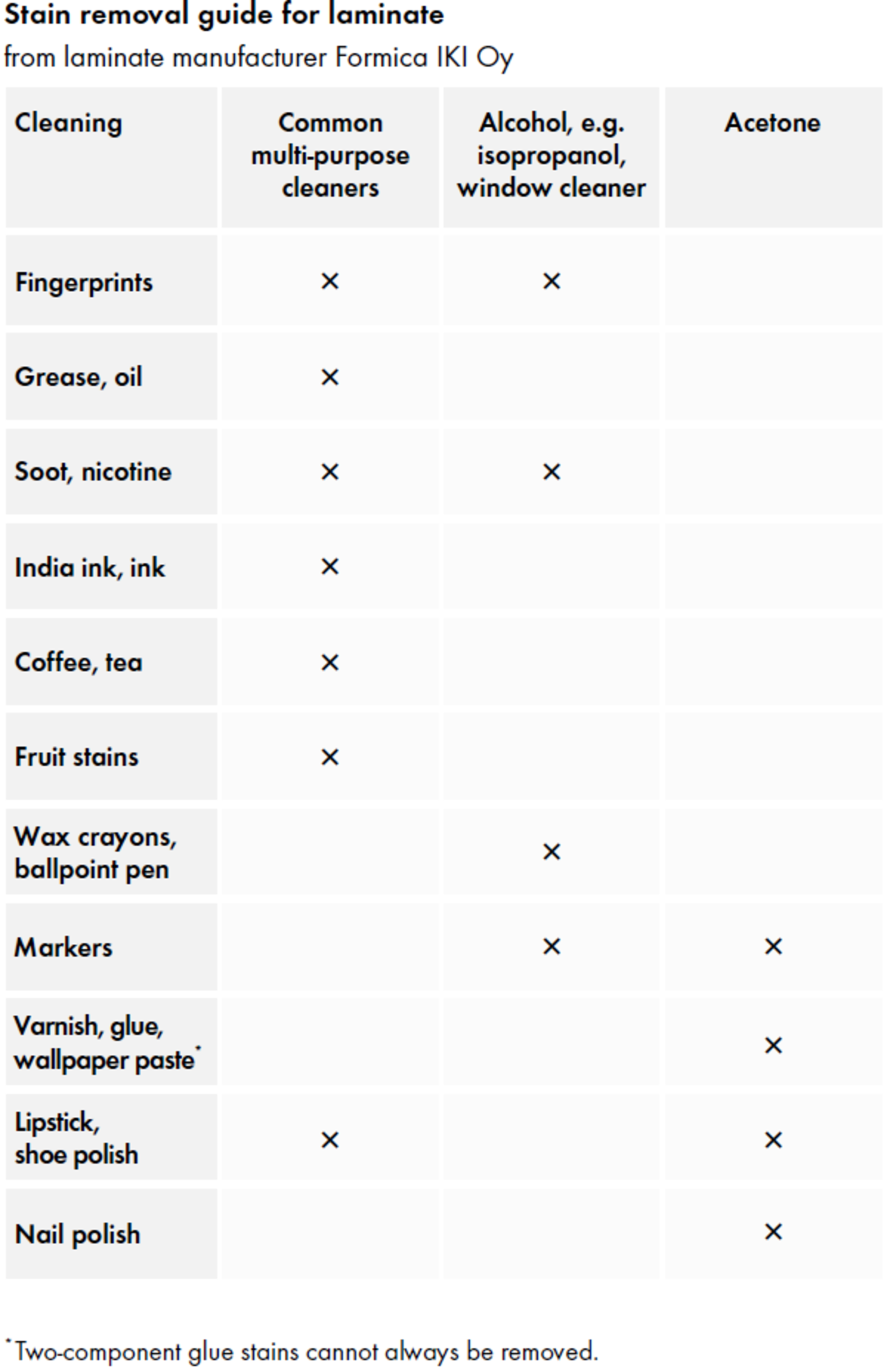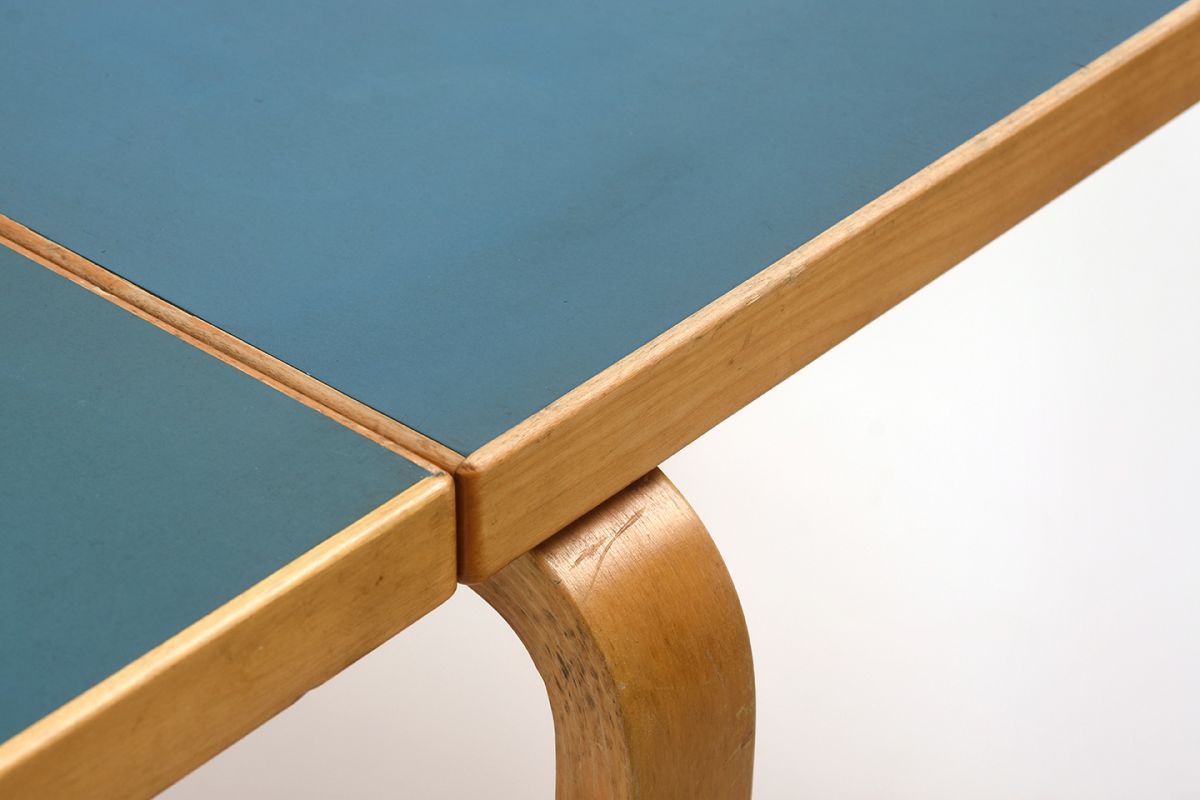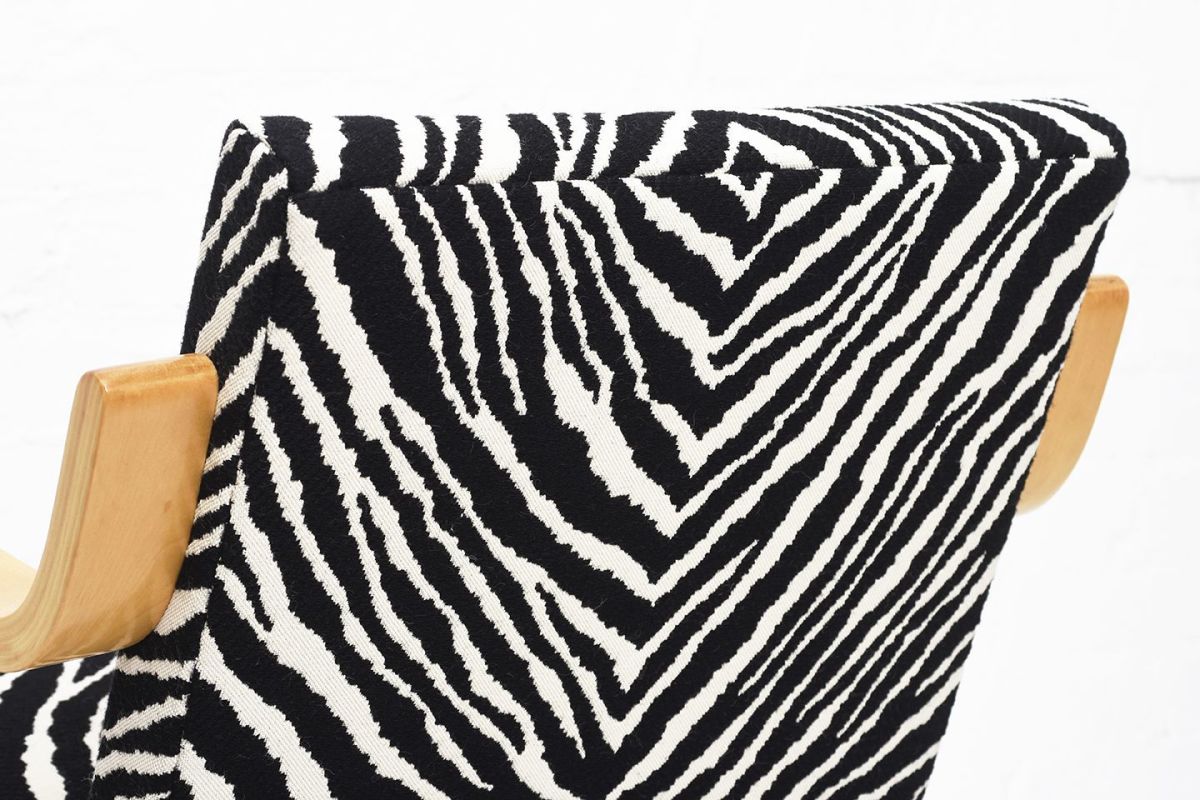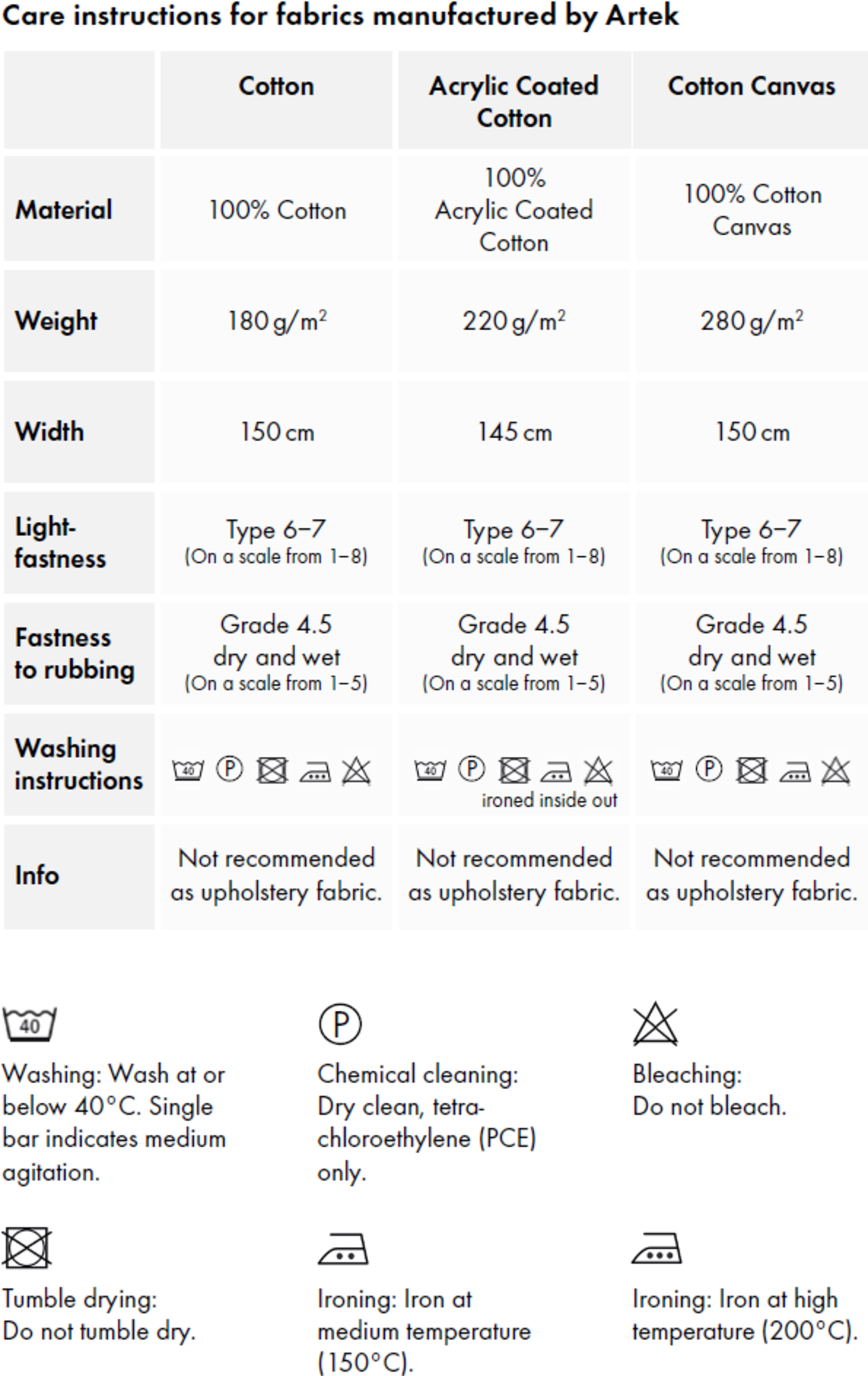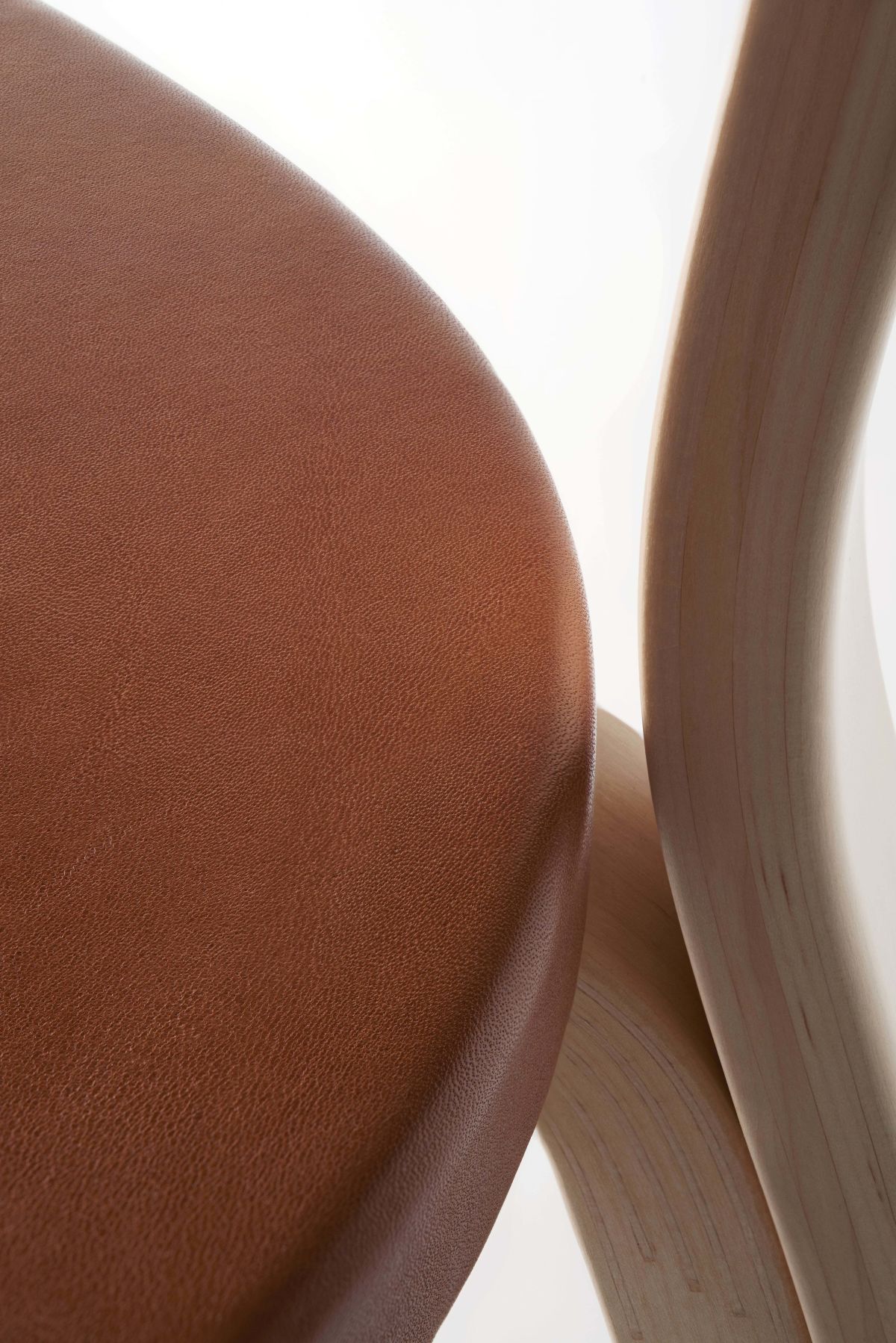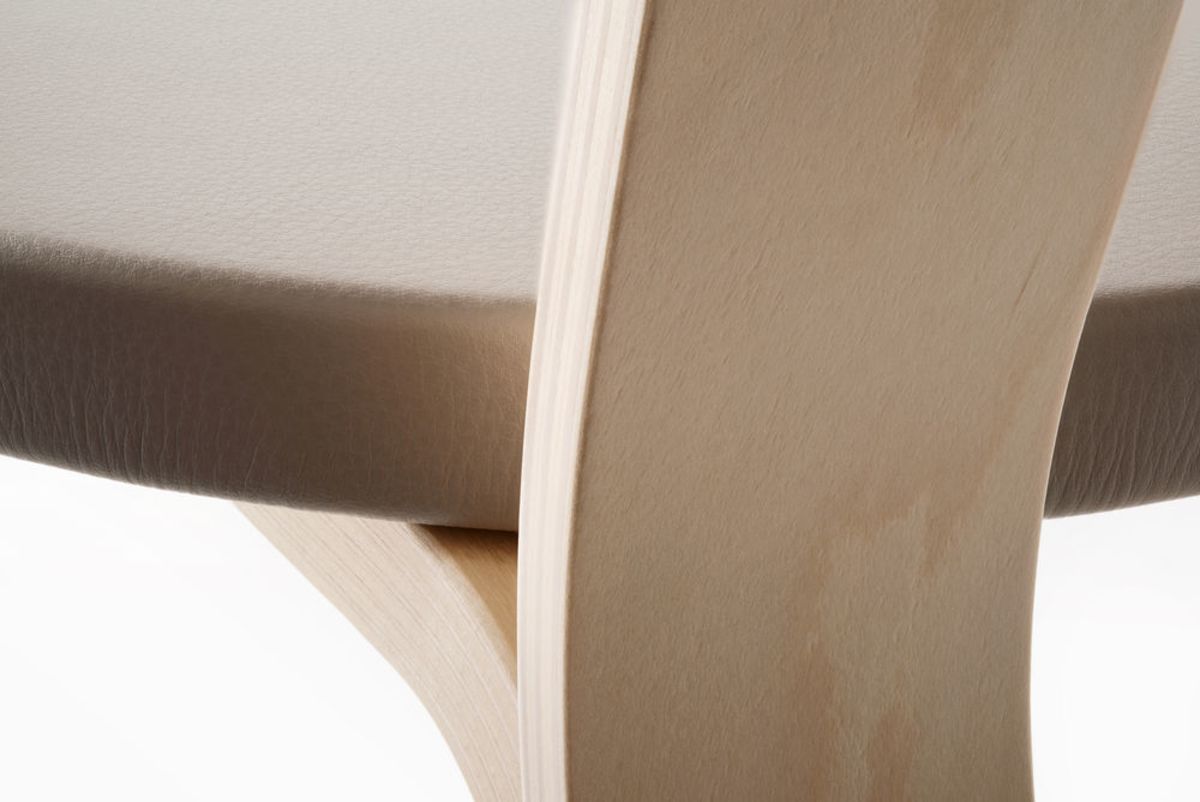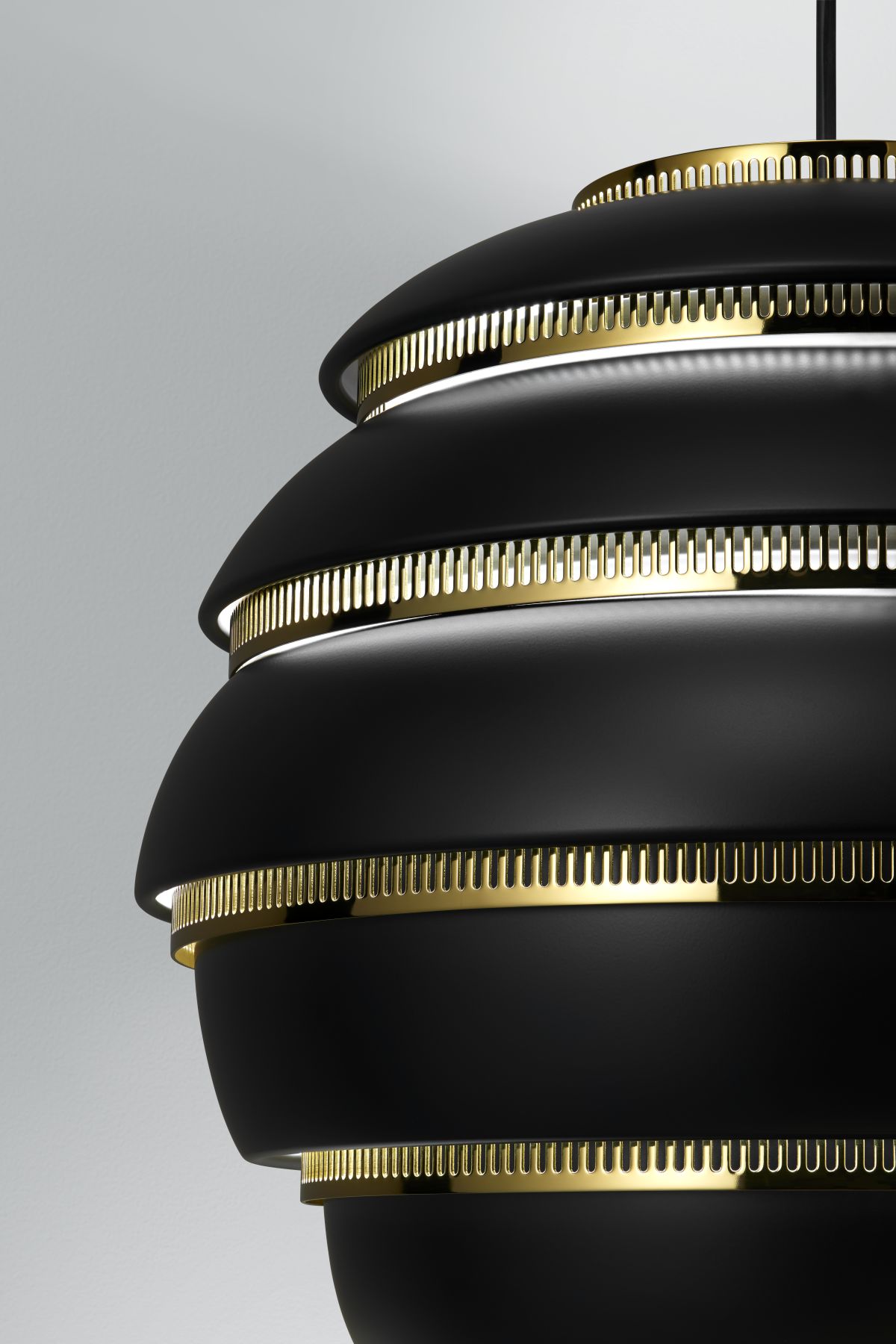Care & Maintenance
A guide to extending the life of your Artek products

This guide will help you care for your Artek furniture. By following our instructions, you’ll keep your beloved items in good condition and assure them a long life.
Many Artek products have been in production for decades. Over time, different surface treatments and manufacturing methods have been used. The guide at hand refers specifically to the surfaces and standard materials currently in production.
Wood is a living material
Every piece of furniture made from wood is unique. The colour of birch wood, for example, changes according to various factors: the habitat of the tree, the traces of insects, the part of the trunk that’s cut, the way the wood is dried while processing.
We strive to select materials that are as uniformly coloured as possible, but some variation is unavoidable in order to keep production ecologically sustainable and material loss to a minimum. At Artek, we see the variability of woodgrain as one of birch’s most beautiful qualities. Sometimes, it yields striking flame patterns, which are enhanced through staining, as different parts of the wood absorb different quantities of stains.
Birch and other types of wood are organic, living materials that react to atmospheric humidity. This can cause swelling or shrinking and may change the form and measurements of the item. All wooden Artek products are manufactured in dry and controlled conditions so that their structure is as quality-consistent and stable as possible. But while we pay close attention to raw material selection, treatment, and storage conditions during production, the products are exposed to variation in humidity after they leave the factory.
In Finland, atmospheric humidity may vary harshly according to the season, and variation occurs indoors, too. It is impossible to completely control or avoid this variation.
Stain removal
In case wiping does not clean the surface, you can try to remove unwanted stains using un diluted neutral detergent. Remove colour and water insoluble stains with mineral spirits or denatured alcohol, proceeding carefully since not all surfaces can withstand this treatment. To be safe, test the impact of the substance of choice on a small area that’s not very visible. After removing the stain, wipe down the surface with a damp cloth, then dry it. Dark streaks caused by metal or rubber can often be removed with an eraser (India rubber).
Scratch removal
If you would like to treat small scratches, use a small, pointy brush to apply a water-based, clear furniture lacquer with gloss level 20–25. This will make the scratch less visible and reinstate the protective layer. For surfaces with strong patina, use a cloth to apply furniture wax instead, since wax usually matches better the darker and more yellow tones of aged wood. After the indicated drying period, remove all excess wax with a cloth to prevent a sticky surface. Heavy or old and coloured scratches can only be fully mended by sanding off and re-lacquering the entire surface, for which we recommend the help of a professional restorer.
Lacquered and stained wood surfaces
Artek furniture is lacquered to make its surfaces more durable; light damage is nearly undetectable on a clear lacquered surface. Before lacquering, the surface may also be stained. Staining highlights the wood grain and evens or intensifies the colour. Due to UV radiation, the colour of a clear lacquered or lightly stained product will change over time.
Protection and care
Wipe the product at regular intervals using a soft cloth dampened with a solution of water and neutral detergent. Keep chemical exposure to a minimum. Dry the surface after wiping to eliminate any remaining moisture but avoid rubbing in order to prevent polishing. If you leave appliances on the surface, replace rubber pads with felt or another material that does not stain. Scratches made by sharp objects are more visible on surfaces with pigmented lacquer than those with clear lacquer.
Avoid
- Cleaning by rubbing. Uneven mechanical rubbing on a surface often causes an uneven polish.
- Abrasives, including “the magic sponge”.
- Strong alkaline and acid detergents.
- Strong solvents, such as acetone and thinner.
- Using wax, which is hard to remove.
- Hot objects and hot water.
- Abundant use of liquids and long-term exposure to liquids.
- Liquids that stain, such as coffee and red wine.
- Textiles that stain, such as bleeding jeans, especially on light surfaces.
- Strong skin lotions, such as self-tanning and medicinal creams.
- Sharp and scratchy objects; grease and dirt may be absorbed by the wood through scratches.
- Strong variations in temperature and humidity.
Artek furniture is made using high-pressure laminate (HPL), a composite, wear-resistant material consisting of paper layered with thermosetting resins. Our IKI White HPL was made to Alvar Aalto's specification using a double layer of paper for extra thickness and a deep white colour.
Protection and care
For daily cleaning, wipe down the laminate with a damp microfiber cloth. Laminate boards can be cleaned with any household detergent that doesn’t contain abrasives. After wiping, be sure to dry the surface, particularly the seam where the laminate meets the wood edge band. Beware that leaving unglazed pottery on an Artek surface will wear out the laminate and cause an uneven polish.
Window detergents can be used to prevent rings or streaks and to remove them if they do appear. Do not use acidic detergents intended for cleaning ceramic or limescale removers intended for appliances; these will cause permanent colour changes on laminate. Immediately remove any splash of such substances if they do come in contact with your surface.
Stain removal
In case wiping does not clean the surface, you can try to remove unwanted stains using undiluted neutral detergent. Remove colour and water -insoluble stains using a clean cloth dampened with an appropriate solution of water and alcohol, acetone, or mineral spirits. Afterwards, rinse the surface with clean water and dry it with a soft cloth. Note that some solvents intended for use on laminates may damage clear lacquered or painted solid wood edge banding.
Avoid
- Cleaning by rubbing. Uneven mechanical rubbing on a surface often causes an uneven polish.
- Abrasives, including “the magic sponge”.
- Sharp objects.
- Hot objects.
- Objects that stain.
- Strong alkaline and acid detergents.
Linoleum is an organic product made primarily of linseed oil, wood flour, granulated cork, and limestone flour. Natural pigments are added for colour. The surface of the linoleum currently in use by Artek has been protected with a thin acrylic layer, which shields the porous surface from dirt.
Protection and care
Wipe the product using a cloth dampened with a solution of water andneutral detergent. Afterwards, dry. Use a microfiber cloth for daily cleaning.Remove grime using an undiluted neutral detergent. Rinse and drythoroughly.
Stain removal
Remove unwanted stains as soon as possible. You can try to remove themwith undiluted neutral detergent. Afterwards, wipe down the surface witha damp cloth and dry completely.
Scratch removal
To treat fine scratches you can gently rub a walnut on the scratches, then remove excess walnut oil and polish with a soft cloth.
Avoid
- Cleaning by rubbing. Uneven mechanical rubbing on a surfaceoften causes an uneven polish.
- Abrasives, including “the magic sponge”.
- Strong alkaline acid or alcohol based detergents.
- Strong solvents, such as acetone and thinner.
- Hot objects and hot water.
- Abundant use of liquids and long-term exposure to liquids.
- Liquids that stain, such as coffee and red wine.
- Sharp, scratchy objects.
- Placing pots, glasses, vases, and dishware directly on the surface. Use coasters instead.

Artek furniture can be upholstered in a variety of fabrics made by different manufacturers, each with its own unique composition and character. To ensure a long life for your item, it’s important to select a material appropriate for your purposes and to follow the manufacturer’s instructions for use and care.
Protection and care of upholstery fabrics
Basic care for textiles means regular vacuuming. This removes dirt and dust from the surface in order to prevent grime build-up, which may weaken the fabric. Vacuum gently on low power using a nozzle designed for textiles. Avoid hard rubbing from different directions.
Protect textiles from direct sunlight, which will fade their colouring. It’s a good idea to turn over the pillows on your furniture from time to time in order to wear them out more evenly. Artek padding and upholstery were designed for use in warm and dry places. Avoid exposure to humidity.
Some fabrics may be stain resistant; if not, you can buy a protective product and treat the furniture yourself. But check with your sales representative beforehand; not all fabrics need stain-proofing. Wool, for example, does just fine without it.
Stain removal
Follow the fabric-specific instructions. Remove dry and loose dirt by vacuuming. Fresh stains are usually easy to remove from synthetic fabrics by wiping with a damp cloth. For natural fibres, it’s probably necessary to use a detergent or stain remover. Test the detergent on a spot of fabric that is not visible. You can try removing stains from wool and plush using the following method: choose a cloth that does not bleed or pill (e.g. a light-coloured towel); dip it in a solution of lukewarm water and colourless detergent (e.g. dishwashing liquid); squeeze the cloth as dry as possible; then pat and wipe the stain lightly while avoiding wetting the fabric.
Artek furniture can be upholstered in a variety of fabrics made by different manufacturers, each with its own unique composition and character. To ensure a long life for your item, it’s important to select a material appropriate for your purposes and to follow the manufacturer’s instructions for use and care.
Washing
Always follow fabric-specific washing instructions. If washing with water is allowed, wash textiles precisely as advised. Test the impact of washing on a spot of fabric that is not visible. Note that the use of zippers in upholstery does not automatically mean the fabric can be washed with water.
Use dedicated shampoos and powders to gently wash sensitive textiles. After washing, manually restore the fabric to its general shape and leave it to dry in an airy place. While it’s still damp, put the cleaned upholstery back on the furniture and let it dry fully. If upholstery cannot be re moved, try wiping it with a damp cloth using a dedicated shampoo.
We recommend dry cleaning for most fabrics even if they are water resistant. Washing with water will wear out the item more quickly; it may also fade colouring or cause shrinkage. Most fabrics shrink somewhat after washing, and those made of synthetic fibre will shrink less than those made of natural fibre.
Note that many laundry services also accept furniture.
Avoid
- Bleaching detergents on coloured fabrics.
- Spinning and tumble drying water-washable fabrics.
- Extensive rubbing during vacuuming, which will wear out the fabric.
- Brushing fabrics that pill.
- Sharp objects.
- Abundant use of water and humidity.
- Beating, as that may damage the weaving.
- UV light, such as from grow lights, and direct sunlight.
- Cold and humid conditions that may cause mould.
For more information, please contact the manufacturer or importer of the fabric.
We use various leather qualities to upholster Artek furniture. Most are finished with a protective surface treatment, but we may also use untreated (or only coloured) leather. The most common leathers used by Artek – Sørensen’s Prestige and Elegance – feature a protective surface finish that makes them more resistant to dirt, water, and grease. Like all high-quality, naturally treated leathers, Artek leathers tend to feature anomalies, such as scarring and colour variation.
These highlight the genuineness of the material. The strongest variation can be seen in the aniline leather (e.g. Elegance by Sørensen).
Protection and care
To clean your item, use either a mild soapy solution or cleaning products made specifically for upholstery leather. Multipurpose cleaners may severely damage the leather, and wax or similar surface treatments may block its pores and prevent natural breathability. Vacuum regularly. Wipe dust from leather using a damp cloth or soft sponge. Protect leather from direct sunlight and heat. Do not place the leather-upholstered item too close to a heat source.
Stain removal
Pat stain using a sponge or cloth dampened with a mild soapy solution; do not rub. Finish by wiping area with a water-dampened cloth and drying with a clean towel. The leather manufacturer Sørensen, from which Artek leathers are largely sourced, recommends cleaning with a foam whipped from soap flakes.
Avoid
- Solvents and solvent cleaners.
- Basic and acidic cleaners.
- Abrasives.
- Dry, hot air and direct sunlight.
- Clothing that may bleed on light leather.
- Grime from scalp and hands.
- Wetting the leather and rubbing wet leather.
The webbing used by Artek is 100% linen. In early 2019, we improved its quality and longevity and updated the colour range. Whereas earlier webbing underwent anti-stain treatment, our new standard quality is not treated with any chemicals. Products with webbing can be re-upholstered.
Care
Vacuum gently using a nozzle designed for use on textiles. Wipe with a damp cloth that does not pill or stain. Shampoo using a neutral detergent.
Avoid
- Exposure to direct sunlight.
- Extensive rubbing.
- Stretching the fabric when it’s moist.
- Using recently cleaned furniture before the belt fabric has completely dried.
We use various metals in many different finishes. Most are coated with protective powder or wet lacquer.
Protection and care
To clean a lacquered or powder coated product, wipe it in regular intervals using a soft cloth dampened with a solution of water and neutral detergent. Keep chemical exposure to a minimum. Dry the surface after wiping to eliminate any remaining moisture but avoid rubbing in order to prevent uneven polishing. Brass, nickel, or chrome plated products can be cleaned by wiping in regular intervals using a soft dry cloth. Unvarnished brass can be polished to give it new shine or left untreated to develop a matte patina. To clean light fixtures, always ensure that the power supply is disconnected before cleaning.
Stain removal
To remove stubborn stains on lacquered or powder coated surfaces, use a soft cloth dampened with glass cleaner. For stains on brass, nickel, or chrome plated surfaces, apply a glass cleaner with a clean, soft cloth. Wipe the surface dry with a soft fibre cloth. Light contaminants and fingerprints on unvarnished brass can also be gently removed with a dry microfibre cloth. Stubborn stains that caused oxidation can be polished away using a household brass polish and a soft cloth by rubbing the cloth in small circular motions over the surface. Before you start cleaning or polishing, be sure to test the product of your choice on an inconspicuous area.
Avoid
- Cleaning by rubbing. Uneven mechanical rubbing on a surface often causes an uneven polish.
- Abrasives, including “the magic sponge”.
- Strong alkaline and acid detergents.
- Strong solvents, such as acetone and thinner.
- Hot objects and hot water.
- Abundant use of liquids and long-term exposure to liquids.
- Strong variations in temperature and humidity.
- Exposure to direct sunlight on lacquered or powder coated surfaces.
All Artek furniture has been designed for indoor use and storage in dry, warm spaces. If a product can be used outdoors, that will be mentioned in its specifications. We advise against placing any item too close to a heat source. We also recommend avoiding strong variations in humidity.
Though many of the instructions will apply across the board, we recommend you seek advice from a restoration professional for older pieces or contact us with questions at info@artek.fi.
